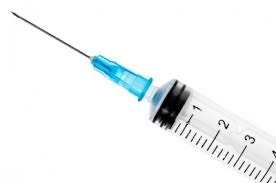 Have you ever had a cortisone injection? Do you know somebody who has had a cortisone injection? If the answer to either of these questions is yes, you might be surprised to know that you're wrong.
Have you ever had a cortisone injection? Do you know somebody who has had a cortisone injection? If the answer to either of these questions is yes, you might be surprised to know that you're wrong.
Doctors don't actually inject cortisone. In fact what is called a cortisone injection is actually an injection of a different medication. When doctors say they're giving a cortisone injection this is essentially a slang term for a number of different corticosteroid medications that are commonly injected. I think it’s better if patients know what is actually going to be injected.
Some commonly used injectable corticosteroids include triamcinolone acetonide (Kenalog), betamethasone (Celestone), and methylprednisolone (Depo-Medrol). It is very common for doctors to mix local anesthetic (numbing medicine) together with the corticosteroid in the same syringe. This is what produces immediate relief of discomfort. The anti-inflammatory effect of the corticosteroid starts later.
The purpose of a cortisone injection is to decrease the inflammation in the space where the injection is administered. This can be in a joint or and in soft tissues such as a tendon sheath. There are certain side effects of corticosteroid injections which patients should understand. Most of the medication is not absorbed into the bloodstream. However a small amount of the injected medications are absorbed. For diabetic patient's blood glucose can be elevated. Injections near the skin can produce depigmentation or a permanent light and area of skin at the site of the injection. Any injection has a small risk of bleeding and infection. Next time somebody offers you a cortisone injection ask them what they're really going to use.
